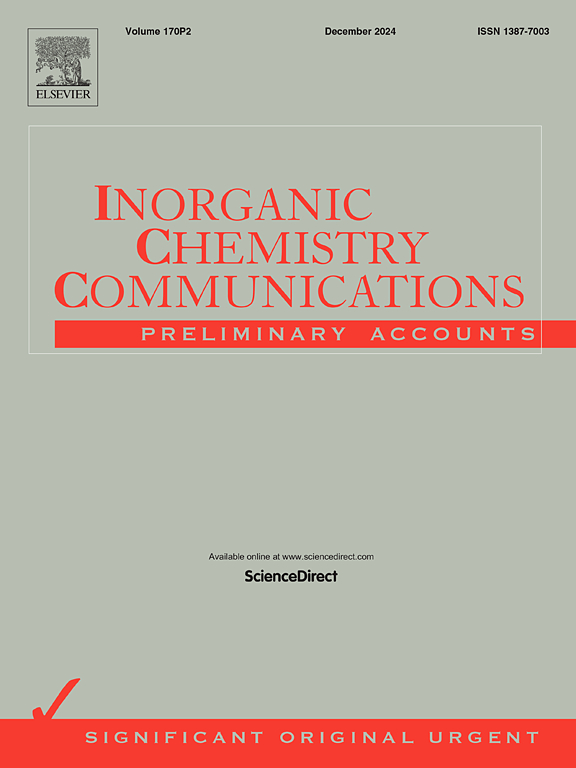A smartphone-based portable fluorescence sensor Utilizing carbon dots for semi-quantification of Microgram-scale microplastics
IF 4.4
3区 化学
Q1 CHEMISTRY, INORGANIC & NUCLEAR
引用次数: 0
Abstract
Developing facile analytical methods and portable instruments to quantify existence of microplastics (MPs) in environmental samples is demanding but remains challenging. In this study, a method exploiting carbon dots (CDs) as fluorescence source and XRD quartz plate as substrate was proposed for semi-quantitative MPs based on fluorescence “turn on” strategy. After excitation at 365 nm, non-fluorescence CDs film was brightened with yellow emission in the presence of polyethylene (PE) MPs due to the surface environment change of CDs. For realizing facile detection, smartphone and ImageJ software were used to capture the fluorescence signals of the CDs film. A linear curve was fitted to be with a linear range of 2–22 μg. Furthermore, the method was further applied on water samples to demonstrate its sensing capability. Finally, a portable sensor involving this analytical method was proposed. This work not only presents a facile analytical method for quantification of PE MPs, but also provides a tool to apply in the field of MPs management.

一种基于智能手机的便携式荧光传感器,利用碳点对微克级微塑料进行半定量
开发简便的分析方法和便携式仪器来量化环境样品中微塑料(MPs)的存在是一项艰巨的任务,但仍然具有挑战性。本研究提出了一种以碳点(cd)为荧光源,XRD石英板为衬底的基于荧光“开启”策略的半定量MPs制备方法。在365 nm激发后,由于CDs表面环境的改变,非荧光CDs薄膜在聚乙烯MPs的存在下变亮并发出黄色发光。为了便于检测,使用智能手机和ImageJ软件捕捉CDs薄膜的荧光信号。线性关系为y=0.31627x+0.77396,线性范围为2 ~ 22 μg。进一步将该方法应用于水样,验证了该方法的传感能力。最后,提出了一种采用这种分析方法的便携式传感器。本工作不仅提供了一种简便的PE MPs定量分析方法,而且为MPs管理领域的应用提供了一种工具。
本文章由计算机程序翻译,如有差异,请以英文原文为准。
求助全文
约1分钟内获得全文
求助全文
来源期刊

Inorganic Chemistry Communications
化学-无机化学与核化学
CiteScore
5.50
自引率
7.90%
发文量
1013
审稿时长
53 days
期刊介绍:
Launched in January 1998, Inorganic Chemistry Communications is an international journal dedicated to the rapid publication of short communications in the major areas of inorganic, organometallic and supramolecular chemistry. Topics include synthetic and reaction chemistry, kinetics and mechanisms of reactions, bioinorganic chemistry, photochemistry and the use of metal and organometallic compounds in stoichiometric and catalytic synthesis or organic compounds.
 求助内容:
求助内容: 应助结果提醒方式:
应助结果提醒方式:


